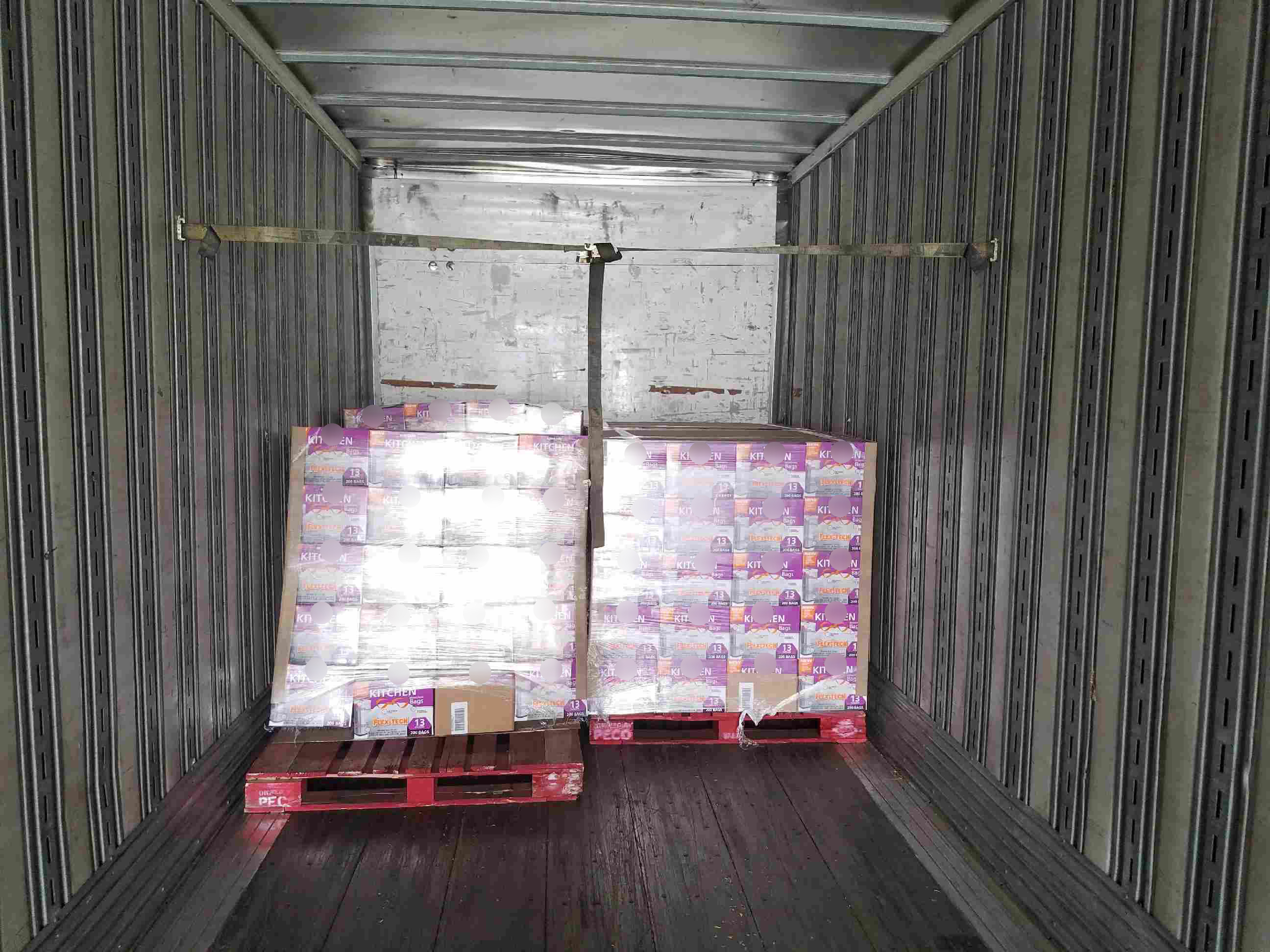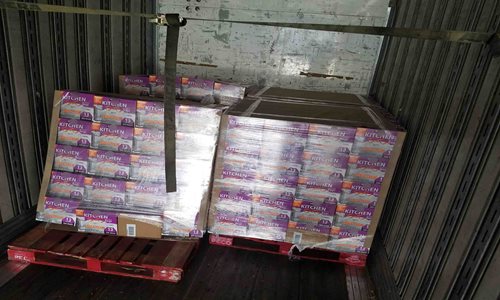Having had the same backhaul for years from Las Vegas to Los Angeles, I am accustomed to things going like clockwork on either end as far as loading and unloading are concerned. This is mainly the reason I received a surprise last week when pulling away from the dock at the receiver, only to find four pallets still left on the trailer. Of course I was not able to see what had happened to the load until after-the-fact, since this warehouse does not allow non-employees into the warehouse area. When I pulled around to the front to get the signed bills, it stated that they were refused due to “load shifting”. Of course I was annoyed at the fact that it seemed at first glance that only one or two of the four left on the trailer had shifted, but those un-shifted pallets would only work to my benefit later in finding out who the true culprit was in the case of the “Trashed Trash Bags”!
.JPG.aspx?width=500&height=300)
Of course I followed protocol and alerted the broker of what had happened, sending him pictures of the refused product and signed bills. As the broker figured out what we were to do with this product from the customer, I began to really analyze the damage to the cargo left in the back of the trailer. I knew from experience with this product that it was loaded the same way every time. The shipper would single-stack the first two or three rows to the nose, put a high strap (seen in the picture) in front of a few rows of double-stacked pallets, put another high strap behind the double-stacked rows, then finish off with all single-stacked pallets all the way to the 48-foot mark that were strapped in on the very back end. So if you can imagine, this makes for a very tight and stable load configuration from tip to tail.

This tight configuration that the shipper followed while loading each time is what got me wondering, “How could such a tight load shoved all the way to the nose and secured so well, shift forward?” Upon further examination, I was able to see that the shifted pallets on the left were tight against the un-shifted pallets on the right. A few more clues began to reveal themselves in the moments that followed, with a little closer observation. Furthermore, the actual red pallet on the only stack of four that was shifted was only halfway under the stack itself. With a lighter type of product I could possibly see the stack coming off the pallet like this, but each stack of these cases weighed about 1500 pounds per pallet and to top it off, they were shrink-wrapped to the pallet at the shipper. It would have taken a pretty strong oppositional force from the bottom of the pallet to cause such a load shift…EUREKA!!!
As the clues added up it hit me that the shift was not due to driver error, but in fact was the fault of the unloading lift driver at the receiver’s warehouse. From my deduction, which was concurred upon by the broker’s agreement, the lift driver apparently attempted to use their long fork electric pallet jack to pick up both pallets in the left-side nose since the warehouse was behind and in a hurry. Without the ability to side-shift like a regular forklift, to make room to safely pull them out, he snagged the product on the right two pallets that were un-shifted when attempting to remove them. This caused the pallet to be yanked from underneath the stack, then in an effort to possibly save face, the unloader attempted to shove it back forward ever so slightly into the nose until he realized that the cases on the bottom were going to flip and crush if he continued to move it forward.
Of course it was easier for him to just leave it and blame “the driver”, not expecting “the driver” would know the product as well as I did from years of hauling it! It is moments like this when it truly pays to know your load, know your product, and know how it is loaded and secured! Watch them load and unload it in any instance you can. In the event you can’t be on the dock watching, make sure to know what is going on to back yourself up in the event someone in the warehouse tries to shift the blame to you.